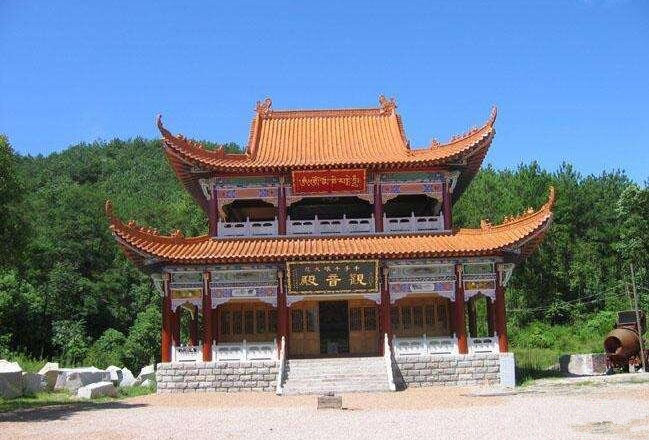
Guanyin Temple in Mengzi City, Honghe
Overview
Guanyin Temple (观音寺) is situated in Mengzi County (蒙自县), approximately 5 kilometers northeast of the Zhuang ethnic village of Panzhihua (攀枝花). The temple is located on the rear mountains of this village and has its origins in the Daoguang Era (道光) of the Qing Dynasty, between 1821 and 1850. Over the years, the temple has undergone several expansions.
Historical Significance
In 1938, notable professors from Southwest Associated University (西南联大), including Pu Jiangqing (浦江清), Tang Yongtong (汤用彤), and Qian Mu (钱穆), visited Erlong Mountain (二龙山) and ascended the Yuhuang Pavilion (玉皇阁), where they made detailed records about the temple. Although the Yuhuang Pavilion has since collapsed, the Guanyin Hall (观音殿) remains and has been recently rebuilt, along with the mountain gate and main hall.
Temple Architecture
Guanyin Temple spans approximately 700 square meters and features several significant structures, including:
- Maitreya Hall (弥勒殿)
- Daxiongbaodian (大雄宝殿)
- Three Kings Hall (三王殿)
- Guanyin Hall (观音殿)
- Yaochi Jinmu Hall (瑶池金母殿)
This temple combines elements of Buddhism and Daoism, with its buildings harmoniously integrated into the mountainous landscape, creating a unique and culturally rich destination.
Location
Guanyin Temple is set against the backdrop of Erlong Mountain, providing a serene and mystical environment that attracts many pilgrims and tourists. Its deep and tranquil setting contributes to the temple’s allure.
How to Get There
Guanyin Temple is easily accessible from Mengzi City. Here are some travel options:
- By Bus: Local buses run from Mengzi to Panzhihua village, from which it’s a short hike to the temple.
- By Taxi: Taxis are available for a direct trip to the temple.
- Self-Driving: For those driving, follow the signs towards Panzhihua and look for local directions to the temple.
Travel Tips
- Best Time to Visit: Spring and autumn are ideal for pleasant weather and beautiful scenery.
- What to Bring: Comfortable shoes for hiking, water, snacks, and a camera for the scenic views.
- Respect Local Customs: Be mindful of local traditions and practices, especially during worship.
- Explore Surroundings: Take time to enjoy the natural beauty and other cultural sites in the area.
- Plan for Hikes: The temple’s location may require some hiking, so be prepared for outdoor activities.


 7 Days GolfingTour
7 Days GolfingTour
 8 Days Group Tour
8 Days Group Tour
 8 Days Yunnan Tour
8 Days Yunnan Tour
 7 Days Shangri La Hiking
7 Days Shangri La Hiking
 11 Days Yunnan Tour
11 Days Yunnan Tour
 6 Days Yuanyang Terraces
6 Days Yuanyang Terraces
 11 Days Yunnan Tour
11 Days Yunnan Tour
 8 Days South Yunnan
8 Days South Yunnan
 7 Days Tea Tour
7 Days Tea Tour
 8 Days Muslim Tour
8 Days Muslim Tour
 12 Days Self-Driving
12 Days Self-Driving
 4 Days Haba Climbing
4 Days Haba Climbing
 Tiger Leaping Gorge
Tiger Leaping Gorge
 Stone Forest
Stone Forest
 Yunnan-Tibet
Yunnan-Tibet
 Hani Rice Terraces
Hani Rice Terraces
 Kunming
Kunming
 Lijiang
Lijiang
 Shangri-la
Shangri-la
 Dali
Dali
 XishuangBanna
XishuangBanna
 Honghe
Honghe
 Kunming
Kunming
 Lijiang
Lijiang
 Shangri-la
Shangri-la
 Yuanyang Rice Terraces
Yuanyang Rice Terraces
 Nujiang
Nujiang
 XishuangBanna
XishuangBanna
 Spring City Golf
Spring City Golf
 Snow Mountain Golf
Snow Mountain Golf
 Stone Mountain Golf
Stone Mountain Golf


















